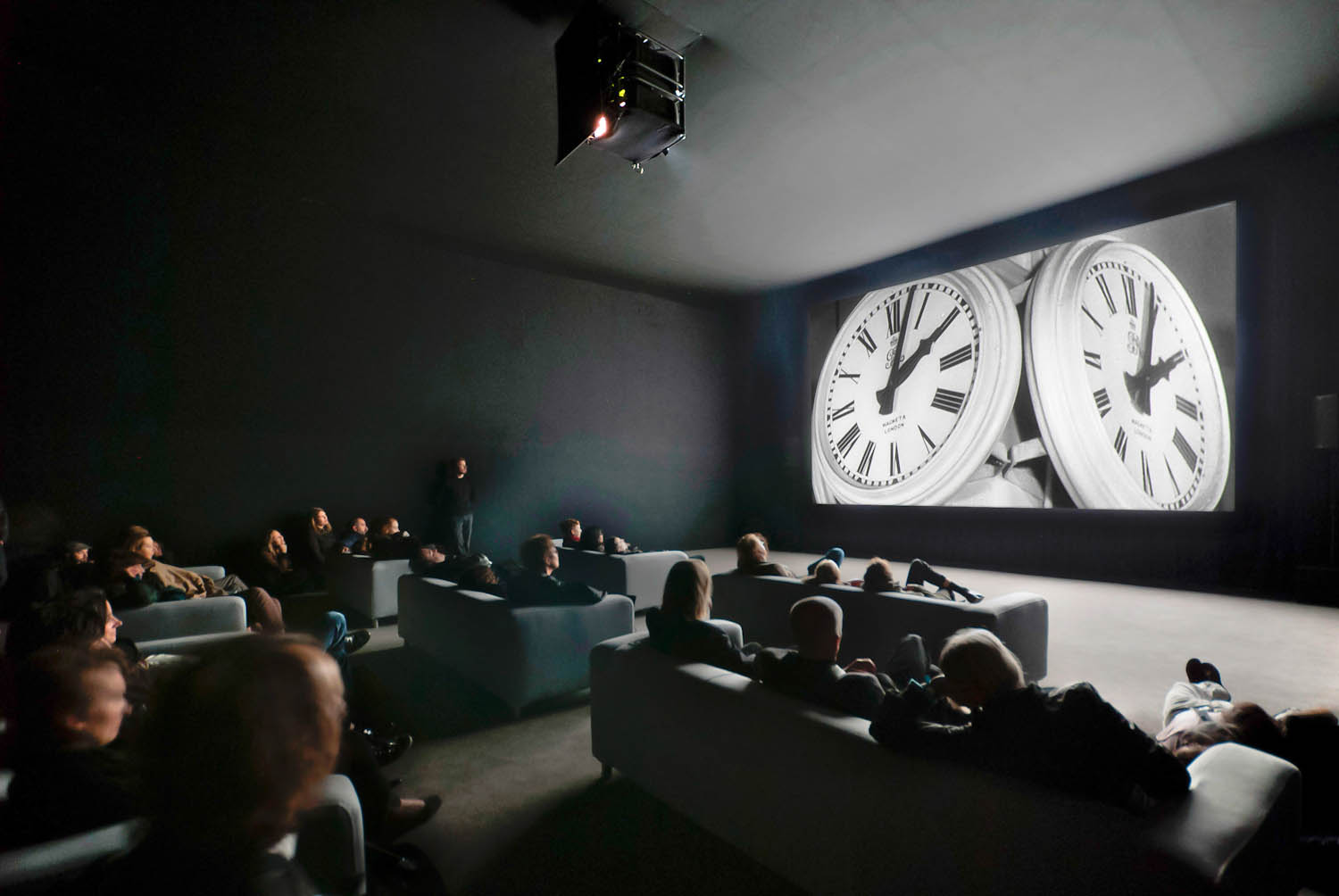The National Gallery of Canada pulled its first all-nighter Feb. 9 for the unveiling of “The Clock,” a 24-hour video installation that fuses cinematic clips with the viewer’s real time.
Gallery director Marc Mayer said it really makes a difference what time people come in and watch the video. For example, at 4 a.m. there are “amazing dream sequences” about insomnia, he said.
At first, Jonathan Shaughnessy, assistant curator of contemporary art, said he didn’t know what to expect.
“Ottawa isn’t New York or London; it’s not the place for people to come at [3 a.m.],” he said referring to how Ottawa’s market is different from other major cities.
However, he said a trickle of people stayed all night and he expects even more to drop in for the upcoming overnight screenings.
The National Capital Commission (NCC) partnered with the gallery to host 24-hour screenings during Winterlude, in addition to regular viewings at the gallery through March 25.
“It’s quite an experience to watch time go by,” said Jean-François Trépanier, vice-president (operations) of the NCC. “Once you start looking at this video, time really stops.”
“The Clock,” created by Christian Marclay, patches together film clips from different eras, countries, and languages that share the theme of time.
The result is a seamless 24-hour looped film that coincides with real time. This means when a scoreboard reads 6:58, or when an actor exclaims, “It must be 18 minutes to seven,” the time announced on screen is the same as the time on the viewer’s watch.
Members of the arts community, the media and the public gathered in the gallery’s Great Hall as Mayer unveiled the piece which was jointly purchased by the gallery and the Museum of Fine Arts in Boston.
Shaughnessy said he was concerned whether “The Clock” would live up to its hype.
“I was a little skeptical,” he said. “It seemed pretty simple.”
But after seeing the piece in London, he said the gallery couldn’t pass up an opportunity to buy it.
“The concept seems simple but the execution is not,” Mayer said.
“The Clock” took Marclay over three years to create. The 3,000-5,000 clips work out to be well over one clip per minute.
A scene from Breakfast at Tiffany’s shows the distracted Audrey Hepburn accidentally setting a woman’s hat on fire with her iconic cigarette holder. The saxophone music playing at the party in Tiffany’s flows into the next clip of an ‘80s film where Tom Cruise walks into a party that’s playing saxophone music.
“It’s magic,” Shaughnessy said. “Sound from one clip spills over into the next, like a dream.”






